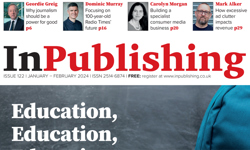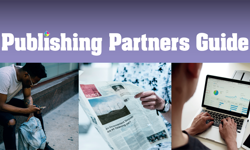Did you know that men think about sex every six seconds? That means if you write a letter that takes four minutes to read, your carefully crafted sales pitch gets interrupted 40 times. Actually, I have no idea a) where that statistic came from and b) whether it’s true (I suspect it’s a teeny weeny bit of an exaggeration). However…
The depressing truth — for us as copywriters, anyway — is that on any given day, at any given moment, our reader is far likelier to be focusing on something they care about than our subs mailpack. Here’s my point. Being a good copywriter means knowing your product inside out and being able to write convincingly about it. Being a great copywriter means knowing your reader the same way. Their foibles. Their motivations. Their innermost fears and desires. Ah, yes, desires. Which brings me back to the good Herr Dr Freud.
Psychological profile
Before we put finger to keyboard, we need to build a psychological profile of our reader. Here’s a list of questions I like to ask about the typical reader when I’m planning a new campaign.
1. What sex are they?
2. How old are they?
3. What keeps them awake at 3.00 am?
4. Where would they rather be right now?
5. What do they want more than anything else out of life?
6. What are their values?
7. How do they see themselves?
8. How do others see them?
9. Are they head or heart people?
10. Are they more likely to be tempted by the promise of riches or the removal of worry?
Why ask these questions? Because I am always aware of this article’s opening point: my reader would rather be thinking about something else. And I know what that something else is. Themselves. The more insights I can gain into the reader’s preferences, state of mind and general outlook on life, the easier I’ll find it to write copy that speaks directly to them in a way they’ll find hard to ignore.
Not everyone shares my view, of course. Here are three things that many publishers imagine their prospective subscribers find interesting. I assume they do because so many sales letters, ads and brochures begin like this. (I’m going to follow this list with some things that subscribers actually DO find interesting.)
Things that publishers think people are interested in
1. The copywriter’s state of mind. Eg "I am delighted to tell you…" or "We are pleased to announce…"
2. Statements about the customer’s job, industry or hobby. Eg "As a busy finance director, you need to know about…" or "Recent years have witnessed an explosion of interest in building cathedrals out of used lolly sticks."
3. Narratives explaining the publisher’s development (usually from humble roots) Eg "We began publishing Practical Composting in 1979. Since then…" or (and very common nowadays) "We have totally redesigned our website…"
What people are REALLY interested in
Now for that list of things people like reading about…
1. Themselves.
2. Er…
3. That’s it.
Now of course I don’t mean that you, as a copywriter, should tell people about themselves. Apart from anything else, when you display the fruits of your list research or database analysis, you’ll come across as a stalker. You know the kind of thing…
"Dear Mr Sample, With your preference for red satin boxer shorts, you’ll be dying to get your hands on Sexy Beast, our new magazine featuring exotic underclothing for today’s go-getting gentleman."
No, I mean, write about your publication from your reader’s perspective. Don’t tell them what it is: tell them what it does for them. In fact, I’ll be more specific. Tell them how your publication will make their life easier, better or more rewarding. If you don’t know, find out, work it out or make something up. In other words, talk benefits.
Noble, immediate, base: hitting your reader above, on and below the belt
I mentioned, in the last article I wrote for InCirculation, that there are three levels of benefits. The top-level benefits are the ones that appeal to the reader’s high-minded opinion of themselves — I call them ‘noble’. They are the surface benefits of the product itself.
So, for example, if you are promoting a business publication, you tell your reader how they will become a better, more effective executive once they subscribe. Or about how they’ll stay abreast of the latest thinking on management. Or marketing, or whatever the focus of your title is.
The mid-tier benefits relate to the subscription process itself — I call these ‘immediate’. You know the kind of thing: save money on the normal price, free delivery direct to your door, exclusive subscriber-only areas on your website.
The deep-level benefits are those that tap into human emotions. These I call ‘base’, and they are, to my mind, the most interesting and powerful. Although the superficial thrust of the Economist’s advertising focuses on the noble, it’s the appeals to base motivations throughout its marketing communications that get talked about and acted on. After all, would you like to be a 42-year-old management trainee? So, pick up your nib and let’s look at the real reasons why people buy things.
Love the sinner…then sell to them
If we sideline Freud for a moment, how about dusting down your theology? Peel away the smart clothes, the carefully constructed personae, the intellectual chitin with which most people protect themselves from the truth, and you’re left with humanity in the raw. And it turns out we’re all sinners! So why not exploit the worst in human nature to achieve your goals?
Let’s remind ourselves of the seven deadly sins and their relevance to our subscriptions copy.
1. Pride – (also known as vanity) – A simple way to make your reader believe you is to flatter them. Tell them how important they are. Acknowledge their huge knowledge and experience. They won’t gainsay any of it. Then suggest that someone with their obvious talent for making the right decision really ought to be subscribing to your publication.
2. Envy – Make them aware that other people like them already subscribe and are benefiting hugely as a result. Nobody likes to miss out and if they feel that the people with whom they identify are all having a great time enjoying their monthly copy of Bungee Jumper incorporating Home Dry Cleaning, they’ll want to join the party.
3. Gluttony – Why do people eat more than they need? Maybe they like the taste. Or the sensation. Maybe they’re in need of comfort. Or solace. Unless you’re selling food or promoting a restaurant, this sin won’t have much relevance for you. But … if your title makes people feel happy and contented when they ‘consume’ it, you have a real selling point.
4. Lust – A little harder, this one. But if you can suggest that becoming a subscriber of yours will satisfy this particular little craving, you’re on to a winner! (I’d also suggest that you’re wasted as a marketer and should be on talk shows.)
5. Anger – People get angry about all sorts of things. I had a beef with my ISP last year that made my teeth grind like a pepper mill. Give people an exit route from this unpleasant emotion and they will thank you. If you know that your main competitor is making their customers angry (poor service or product quality for example, or excessive price rises), you have some great leverage to capture market share.
6. Greed – A major motivator for sales people through the ages. People sometimes want stuff they don’t need. People often want more of what they’ve already got. Especially profits, pay, respect, office space, bottles of wine, pens, calculators, holidays, cars and clothes. Promise your subscribers MORE and you’ll have their ear.
7. Sloth – People are lazy. So show them how your publication can save them energy. Perhaps they can sit at their desk and have stuff emailed straight to their inbox. Tell them you’ll deliver it direct to their door instead of their having to walk to the shops. Help them avoid work and they’ll open their wallets.
Whether you are selling to consumers or people at work, you ignore the baser human emotions at your peril. Yes, people will want to rationalise their decisions. So make sure you provide plenty of objective reasons why subscribing is a sensible thing to do. But try to think about your reader as a person. Draw up a profile and think about what makes them tick. And make sure you hit at least one of the deadly sin buttons in your sales pitch. (By the way, only a beginner would actually tell their reader that they were lazy, lustful or greedy: BE SUBTLE!)
FEATURE
What Sigmund Freud and the Bible taught me about copywriting
Asked to define advertising, John E Kennedy, a Canadian policeman-turned copywriter, said it was “salesmanship in print”. It’s a phrase that, Andy Maslen believes, points the way to above-average subs copy. Here, he provides a few pointers on the psychology of selling.










